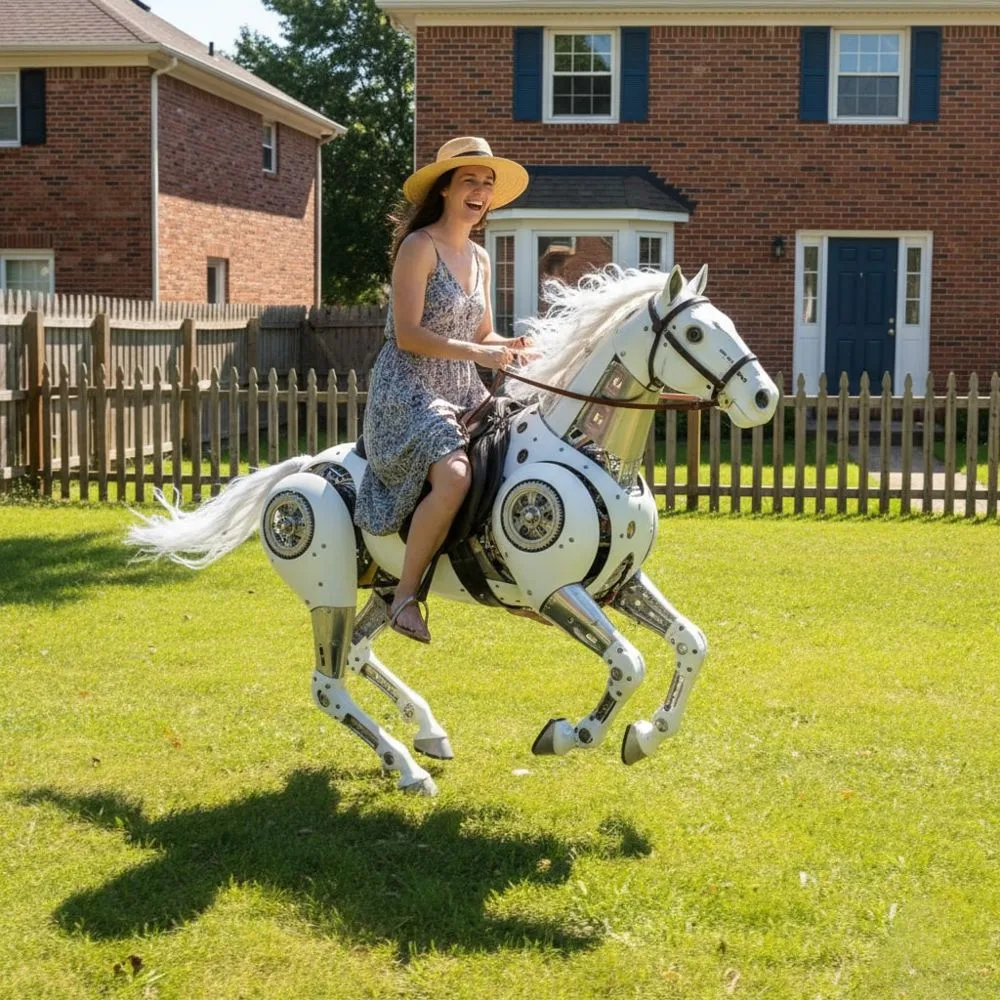The concept of an electric horse might sound like something pulled straight from a science fiction novel, but this innovative technology is rapidly becoming a reality that’s reshaping multiple industries. From therapeutic applications to entertainment venues and even sustainable transportation solutions, the electric horse represents a fascinating convergence of traditional equestrian culture and modern technological advancement.
Understanding What an Electric Horse Really Is
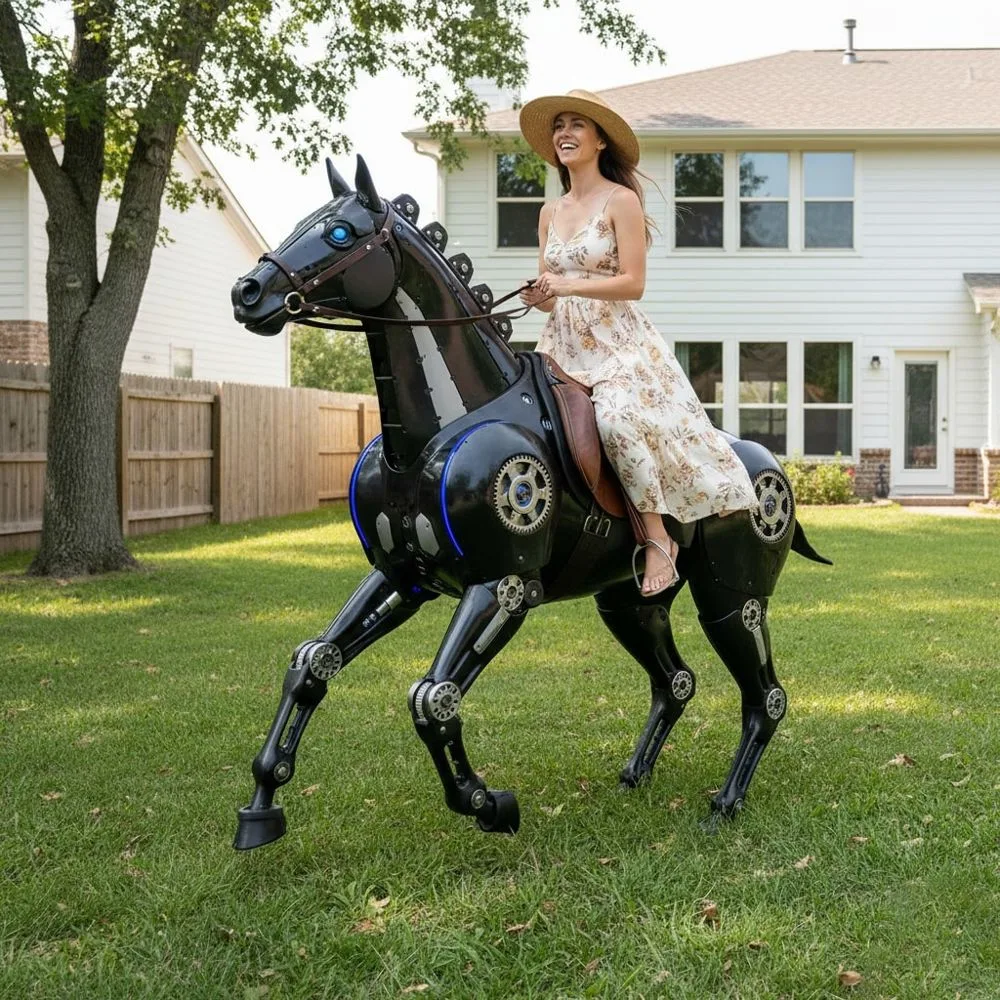
When we talk about an electric horse, we’re generally referring to one of two distinct but equally fascinating concepts. The first involves sophisticated robotic or mechanical horses powered by electric motors, designed to simulate the experience and movement of a real horse. The second interpretation encompasses the broader metaphor of transitioning from traditional horsepower to electric power in various transportation contexts.
These mechanical marvels are not simple toys or novelties. Modern electric horse technology incorporates advanced robotics, artificial intelligence, and biomechanical engineering to create experiences that closely mirror interactions with living horses. Engineers and designers have spent countless hours studying equine movement patterns, muscle dynamics, and behavioral responses to create machines that move, respond, and even “feel” remarkably similar to their biological counterparts.
The development of electric horse technology draws inspiration from centuries of human-equine partnership while addressing contemporary concerns about animal welfare, accessibility, and sustainability. These innovations serve people who cannot access traditional horseback riding due to allergies, fear, physical limitations, or geographical constraints.
The Technology Behind Electric Horse Innovation
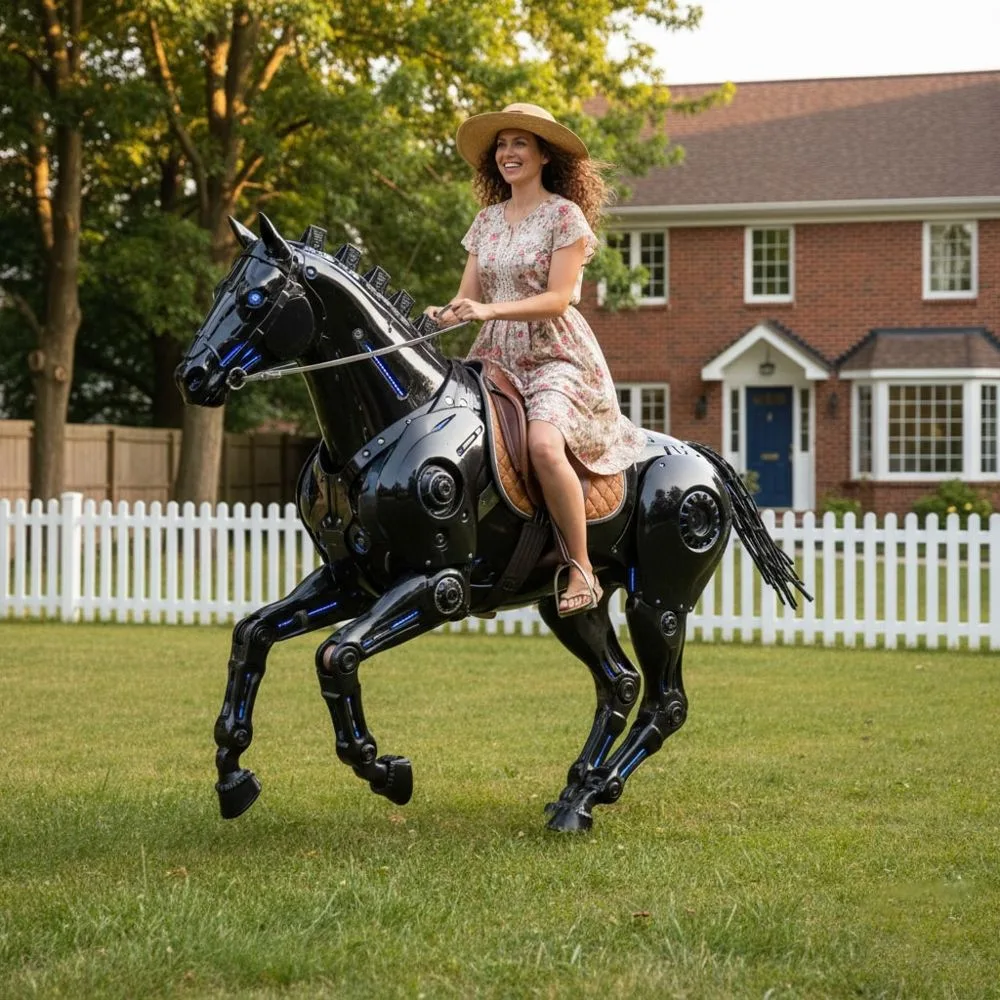
Creating a convincing electric horse requires an intricate blend of mechanical engineering, computer science, and deep understanding of biological systems. The most sophisticated models feature articulated joints that replicate the complex skeletal structure of horses, allowing for natural gaits including walking, trotting, cantering, and galloping.
Advanced sensors throughout the body of an electric horse can detect rider weight distribution, balance, and subtle command cues, similar to how a trained horse responds to a skilled rider. Some models incorporate pressure sensors, gyroscopes, and accelerometers that constantly adjust the machine’s movements to maintain stability and provide appropriate feedback to the rider.
The propulsion systems in these machines have evolved dramatically over the past decade. Early prototypes relied on simple motor systems that produced jerky, unrealistic movements. Contemporary electric horses utilize multiple synchronized motors working in concert, creating fluid motion that genuinely replicates the rolling gait of a living animal. Battery technology improvements have extended operational times, with some models capable of several hours of continuous use on a single charge.
Software plays an equally crucial role in bringing electric horses to life. Sophisticated algorithms process input from sensors and adjust mechanical responses in real time. Some advanced models even incorporate machine learning capabilities, allowing the electric horse to adapt to individual riders over time and provide increasingly personalized experiences.
Therapeutic Applications Transforming Healthcare
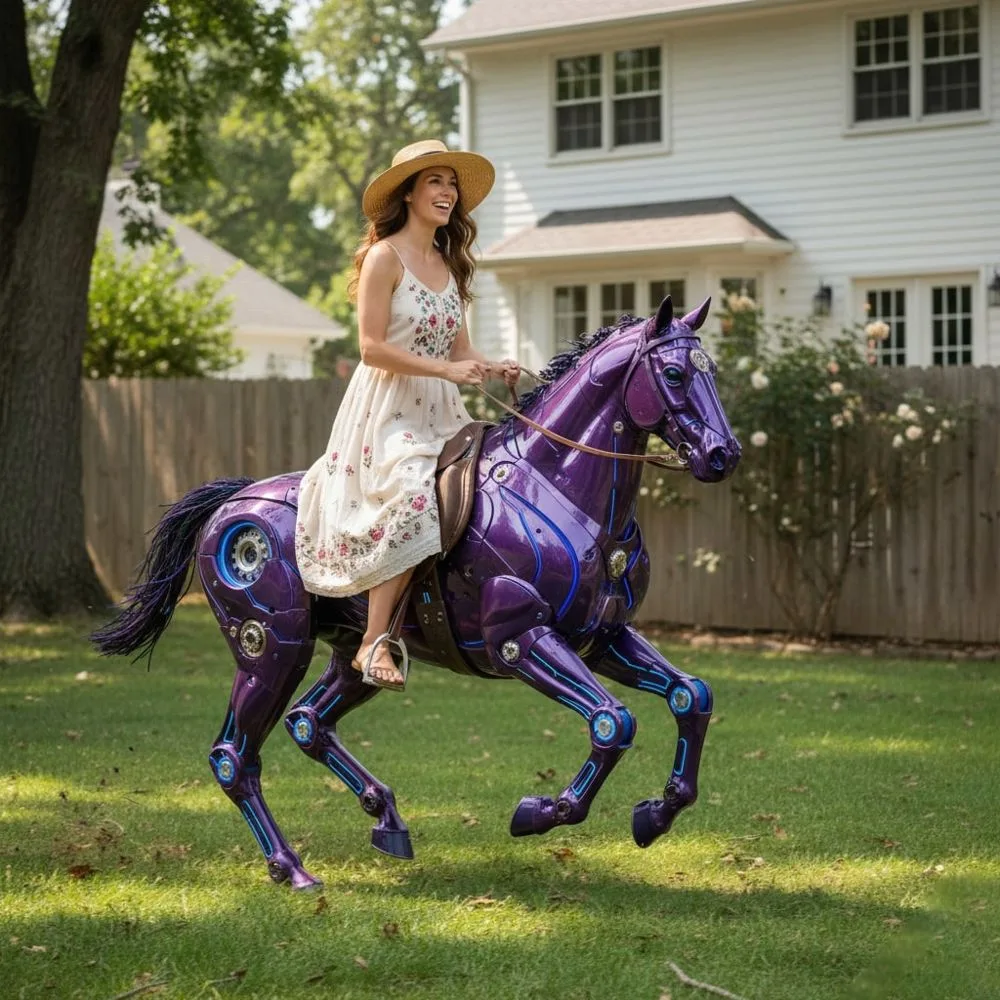
One of the most impactful applications of electric horse technology exists in therapeutic settings. Hippotherapy, or horse therapy, has long been recognized as beneficial for individuals with physical disabilities, developmental disorders, and psychological conditions. However, traditional hippotherapy faces significant limitations including cost, accessibility, weather dependence, and unpredictability of living animals.
Electric horses are revolutionizing therapeutic riding programs by providing consistent, controllable, and widely accessible alternatives. Therapists can precisely adjust movement patterns, speed, and intensity to match each patient’s needs and therapeutic goals. This level of control proves especially valuable when working with individuals who have severe mobility challenges or heightened anxiety around large animals.
Research conducted at rehabilitation centers utilizing electric horse therapy has shown promising results. Patients demonstrate improvements in core strength, balance, coordination, and motor planning. The rhythmic motion stimulates neurological pathways similar to walking, making it particularly beneficial for individuals with cerebral palsy, multiple sclerosis, or recovering from strokes.
Beyond physical benefits, the psychological advantages are substantial. Many patients who feel intimidated by living horses find electric horses less threatening, allowing them to experience the therapeutic benefits of riding without overwhelming fear. The technology also enables indoor therapy sessions year-round, removing weather barriers that often interrupt traditional programs.
Entertainment and Education: New Frontiers
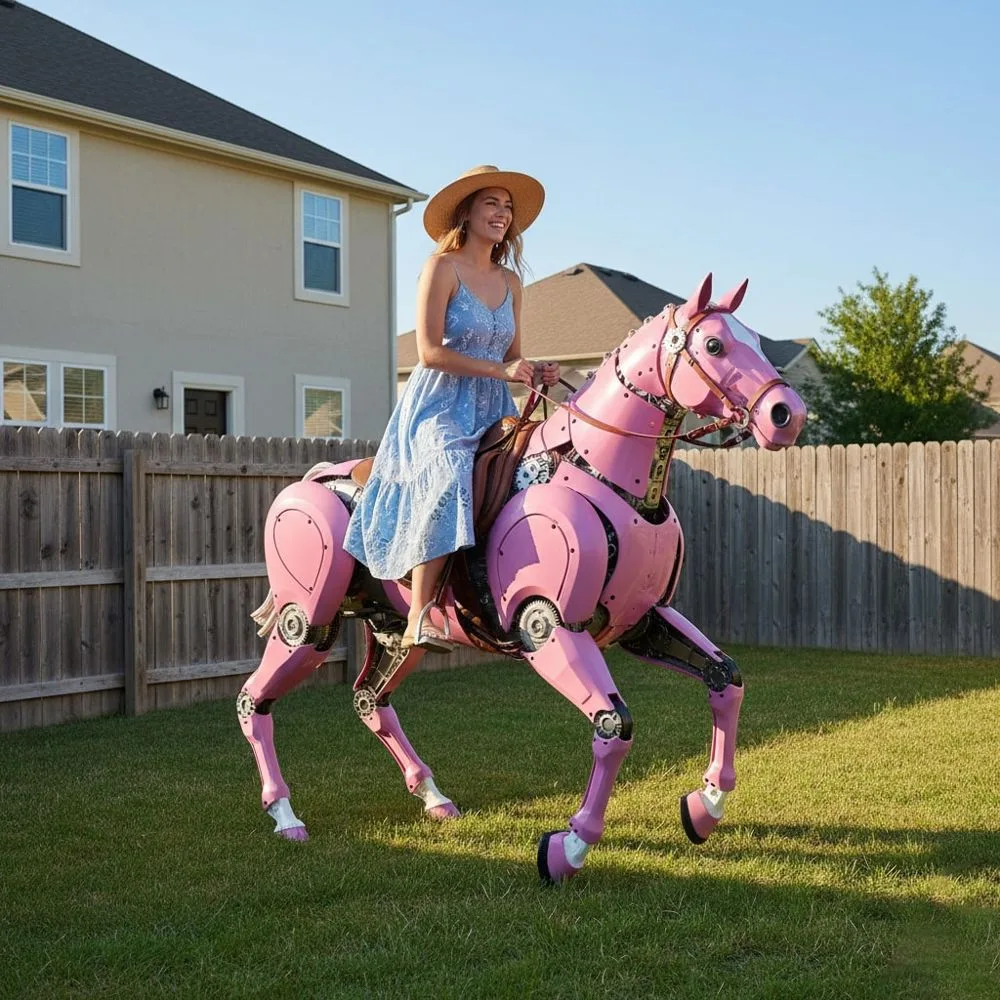
Theme parks, museums, and entertainment venues have embraced electric horse technology to create immersive experiences that educate and entertain. These installations allow visitors to experience historical periods, understand different riding styles, or simply enjoy the thrill of horseback riding without the extensive training and safety concerns associated with live animals.
Educational institutions have discovered that electric horses serve as excellent teaching tools for veterinary students, equestrian science programs, and riding instructors. Students can practice techniques, study movement biomechanics, and develop skills in a controlled environment before working with living horses. This approach reduces stress on training horses while providing unlimited practice opportunities for learners.
Virtual reality integration has taken electric horse experiences to unprecedented levels. Riders can don VR headsets while mounted on an electric horse, transporting themselves to mountain trails, beach gallops, or competitive show jumping courses. The synchronized movement of the mechanical horse with the virtual environment creates remarkably convincing simulations that engage multiple senses simultaneously.
The Metaphorical Electric Horse: Sustainable Transportation Evolution
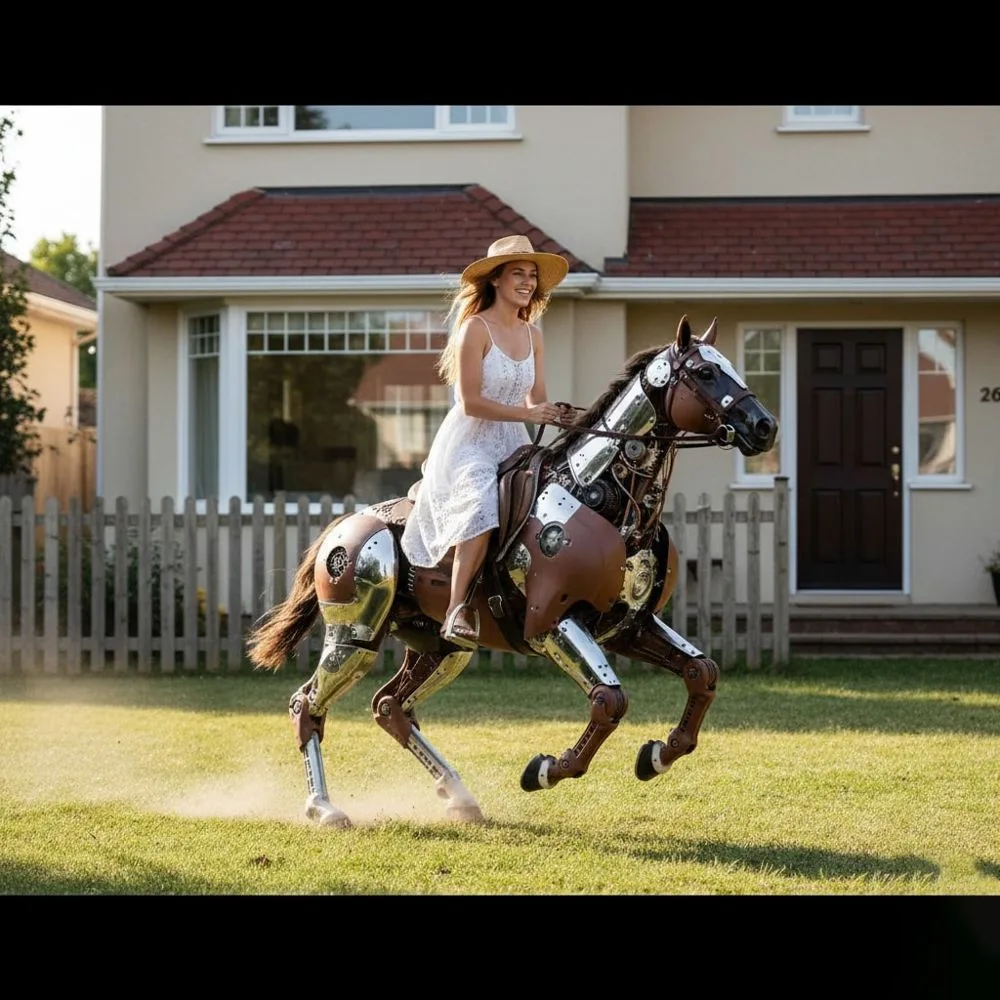
Beyond literal robotic horses, the term electric horse has gained traction as a metaphor for the transition from combustion engine vehicles to electric alternatives. Just as horses once represented the primary mode of transportation before being replaced by automobiles, we’re now witnessing another revolutionary shift toward sustainable electric mobility.
This metaphorical electric horse encompasses electric cars, motorcycles, bicycles, and scooters that are transforming urban landscapes and transportation habits worldwide. The comparison proves apt because both transitions represent fundamental changes in how society approaches movement, infrastructure, and environmental impact.
Electric vehicles offer quiet operation, zero direct emissions, and lower operating costs compared to their fossil fuel predecessors. As battery technology improves and charging infrastructure expands, the practical advantages of electric transportation become increasingly compelling. Countries worldwide are setting ambitious targets to phase out combustion engines, effectively ushering in the age of the electric horse.
Environmental Benefits and Sustainability Considerations
Whether discussing literal robotic horses or the broader electric transportation movement, environmental considerations feature prominently in the conversation. Mechanical electric horses eliminate concerns associated with horse ownership including land use for grazing, water consumption, feed production, and waste management.
In therapeutic and recreational contexts, electric horses can serve more people with smaller environmental footprints. A single well-maintained electric horse can provide experiences to hundreds of riders annually without the resource requirements of maintaining live horses. This efficiency makes therapeutic riding programs more financially viable and environmentally responsible.
The manufacturing and operation of electric horses do carry environmental costs including energy consumption and electronic waste concerns. However, responsible manufacturers are increasingly adopting sustainable practices, utilizing recycled materials, implementing efficient production methods, and designing for longevity and recyclability. As renewable energy sources become more prevalent, the carbon footprint of operating electric horses continues to decrease.
Economic Implications and Market Growth
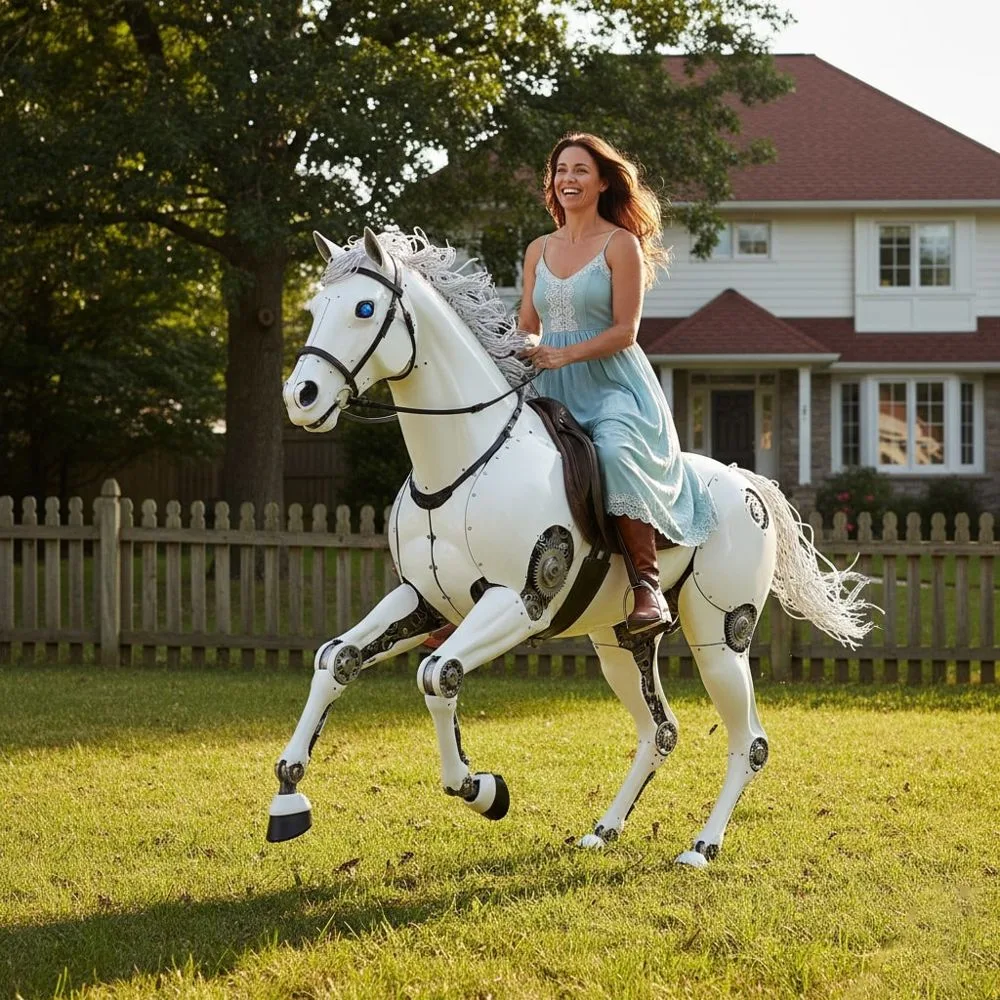
The electric horse market, encompassing both robotic horses and electric vehicles, represents billions of dollars in economic activity and tremendous growth potential. Investors and entrepreneurs recognize opportunities spanning manufacturing, software development, maintenance services, and experience provision.
For therapeutic facilities, the initial investment in an electric horse can be substantial, but operational costs prove significantly lower than maintaining live therapy horses. Feed, veterinary care, stable maintenance, and insurance expenses for living horses accumulate rapidly, while electric alternatives require primarily electricity and periodic maintenance. This economic equation makes therapy more accessible to facilities with limited budgets.
The entertainment sector has shown willingness to invest in high-quality electric horse installations that attract visitors and create memorable experiences. Museums exploring equestrian history, theme parks developing western or medieval attractions, and experience centers focusing on technology demonstrations all represent growing markets for this technology.
Challenges and Future Development
Despite remarkable progress, electric horse technology faces ongoing challenges. Creating truly lifelike movement remains difficult, and discerning riders can still detect differences between mechanical and biological horses. Engineers continue refining motion algorithms, joint mechanisms, and sensory feedback systems to close this gap.
Battery limitations restrict operational duration and require careful energy management. Future developments in battery chemistry and energy storage will extend usability and reduce charging times. Some researchers are exploring alternative power systems including fuel cells and hybrid approaches that could provide even greater operational flexibility.
Cost remains a barrier to widespread adoption. High-quality electric horses require substantial investment, limiting access primarily to institutions and commercial operations rather than individual consumers. As production scales increase and manufacturing processes improve, prices should gradually decrease, making the technology more accessible.
The social acceptance of electric horses in certain contexts also requires attention. Equestrian purists sometimes view mechanical alternatives with skepticism, concerned about losing the authentic human-animal connection that makes horseback riding special. Advocates emphasize that electric horses supplement rather than replace traditional equestrian activities, serving populations and purposes where live horses prove impractical.
The Road Ahead: Innovation and Integration

Looking forward, the electric horse concept in both its literal and metaphorical forms appears poised for continued growth and refinement. Researchers are exploring artificial intelligence integration that would allow electric horses to exhibit more naturalistic responses and even simulated personalities. Imagine a mechanical horse that “remembers” its regular riders and adjusts its behavior accordingly, creating bonds that echo traditional horse-rider relationships.
Integration with augmented reality may allow riders to see their electric horse transformed into different breeds, colors, or even mythical creatures while maintaining the physical riding experience. This technology could revolutionize entertainment and therapeutic applications by adding customization and imagination to already impressive mechanical capabilities.
In the transportation realm, the electric horse metaphor will likely expand as new vehicle categories emerge. Electric flying vehicles, autonomous electric shuttles, and personal mobility devices will continue the evolution from animal power through combustion engines to sustainable electric alternatives.
Wrapping Up the Electric Horse Revolution
The electric horse represents far more than a technological curiosity or simple replacement for living animals. This innovation embodies humanity’s remarkable ability to honor tradition while embracing progress, to solve problems through creativity, and to make experiences more accessible without sacrificing quality or meaning.
Whether we’re discussing sophisticated robotic horses bringing therapeutic benefits to people with disabilities, entertainment installations creating magical experiences, or the broader transition to sustainable electric transportation, the electric horse concept demonstrates how technology can enhance lives while addressing environmental and practical concerns. As development continues and adoption expands, these mechanical marvels and the philosophy they represent will increasingly shape how we think about movement, therapy, entertainment, and our relationship with both technology and the natural world. The future of the electric horse gallops toward us with exciting possibilities that benefit people, animals, and the planet we share.

